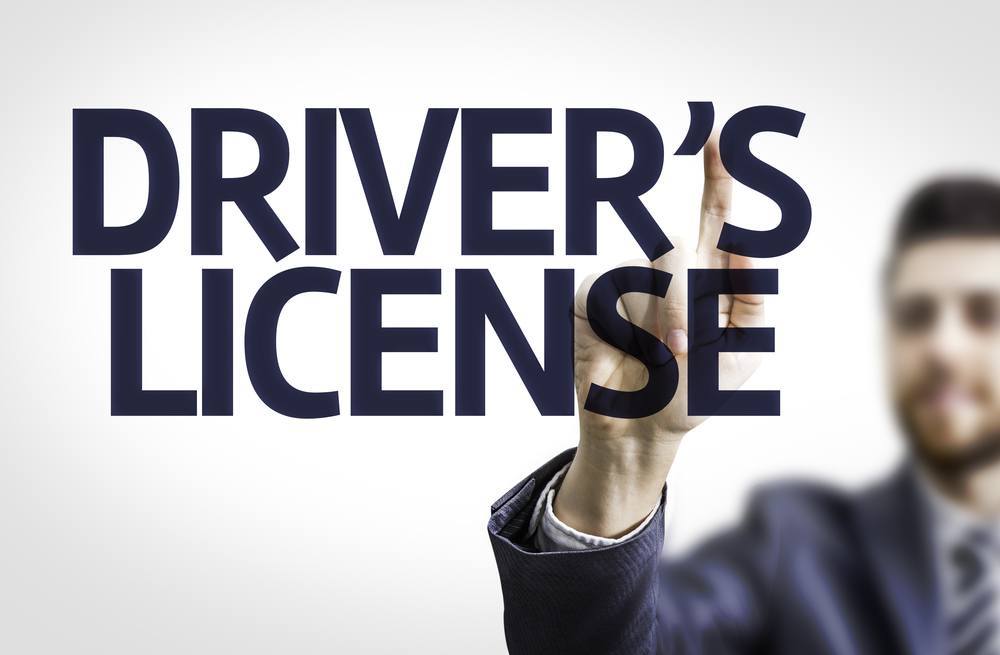Understanding and meeting the specific eligibility requirements for a driver’s license in Texas, which vary based on your age, residency status, and citizenship, is crucial. Whether you’re a teenager, a young adult, or a new resident of Texas, this understanding will empower you to navigate the process confidently and efficiently.
At Virtual Drive of Texas, we’ve supported thousands of Texans through the licensing process. This comprehensive guide covers all you need to know about Texas driver’s license eligibility. It provides clear directions and support to help you through each step of the process, ensuring you’re never alone in this journey.

What Is Texas Driver’s License Eligibility?
Driver’s license eligibility in Texas is not just about meeting specific criteria. It’s about ensuring that you, as a driver, have the necessary knowledge, skills, and documentation to drive safely and legally on Texas roads. It’s a responsibility we all share.
The basic eligibility criteria include:
- Meeting minimum age requirements
- Establishing Texas residency
- Providing proof of identity and lawful presence in the United States
- Completing the required driver education and training
- Passing vision, knowledge, and skills tests
Understanding these requirements before visiting your local Department of Public Safety (DPS) office is essential. Missing documentation or incomplete education requirements can result in denied applications and wasted trips. Being adequately prepared ensures a smoother, more efficient licensing process.
Age-Based Eligibility and Driver Education Requirements
Texas has different licensing requirements based on your age group. Each category has specific driver education requirements designed to provide appropriate training for drivers at various stages of life.
Teens (Ages 15-17)
If you’re a teen driver, you’ll follow the Graduated Driver License (GDL) program:
- Age 15: Eligible to begin the classroom portion of driver education, also eligible for a learner’s permit after taking the first 6 hours of training.
- Age 16: Eligible for a provisional license after meeting all requirements
- Age 17: Still requires parental consent for licensing
Teen drivers must complete a comprehensive driver education program that includes:
- 24 32 hours of classroom instruction
- 3044 hours of behind-the-wheel training (including 10 hours at night)
- 7 Seven hours of behind-the-wheel training along with 7 hours of observation time.
- 2 hours viewing the Impact Texas Teen Drivers (ITTD) program.
You can complete these requirements through parent-taught driver education or an approved course, such as Virtual Drive’s Teen Driver Education program.
Young Adults (Ages 18-24)
Young adults between 18 and 24 have different requirements:
- Must complete a 6-hour adult driver education course
- Not subject to the GDL program restrictions
- Must still complete the Impact Texas Teen Drivers (ITTD) program
The adult driver education course focuses on critical driving skills and Texas traffic laws. It is designed specifically for adult learners who may already have some driving experience.
Adults (Ages 25 and Older)
If you’re 25 or older, the process is more straightforward:
- No formal driver’s education is legally required
- Must still pass all DPS tests (vision, knowledge, and driving)
- Driver education is still highly recommended for safety and test preparation
While not mandatory, taking an adult driver education course can significantly improve your chances of passing the required tests and developing safe driving habits.
Residency and Identity Proof Requirements
All applicants, regardless of age, must establish Texas residency and prove their identity when applying for a license.
Texas Residency Proof
You’ll need to provide at least two documents proving your Texas residency. Acceptable documents include:
- Utility bills (water, electric, gas) with your name and address
- Current deed, mortgage, or residential rental/lease agreement
- Texas voter registration card
- Texas school enrollment records (for students)
- Insurance policy or statement
- Bank statements or credit card statements
Documents must be current (issued within 90 days) and show your name and Texas residential address.
Identity and Lawful Presence Documentation
You must also provide documentation proving your identity and lawful presence in the United States. Primary identification documents include:
- A Texas driver’s license or ID card that has expired for less than two years
- U.S. passport or passport card
- U.S. birth certificate or birth certificate card
- U.S. Certificate of Citizenship or Certificate of Naturalization
- U.S. Permanent Resident Card
If you don’t have a primary document, you can provide one secondary document (like a Social Security card) plus two supporting documents or two secondary documents plus one supporting document.
Non-U.S. citizens must provide documentation showing lawful presence, such as:
- I-551 Permanent Resident card
- Foreign passport with a valid U.S. visa and I-94
- Employment Authorization Card
- Other appropriate documents based on immigration status
Special Circumstances and License Types
Hardship Licenses
In certain situations, teens under 16 may qualify for a hardship license (also called a minor restricted driver license). This requires demonstrating a significant need, such as:
- Family hardship requiring the minor to drive
- Illness of a family member requiring transportation assistance
- Enrollment in a vocational education program
Hardship licenses have strict limitations and require substantial documentation, including a notarized affidavit from a parent or guardian.
Military Exemptions and Extensions
Active-duty military personnel and their dependents have special provisions:
- Out-of-state licenses can remain valid beyond expected expiration dates while on active duty
- Military ID can serve as additional identification
- Military personnel returning to Texas have 90 days to obtain a Texas license
New Texas Residents
If you’re moving to Texas with a valid out-of-state license:
- You have 90 days after establishing residency to obtain a Texas license
- You must surrender your out-of-state license to the Texas DPS
- You may be exempt from the driving test, but must take the vision and knowledge tests
- You must still provide all required proof of identity and residency documents
Out-of-country licenses may require additional verification, and international driving permits are not substitutes for a Texas license for residents.
Driver Programs and Graduated License Requirements
Texas Graduated Driver License Program
Teen drivers must navigate the Texas Graduated Driver License (GDL) program, which includes three phases:
- Learner License (Permit): Allows driving only with a licensed adult 21 or older
- Provisional License: Available at age 16 after holding a learner license for six months, with restrictions on nighttime driving and passengers
- Full License: Available at age 18, removing all provisional restrictions
This phased approach helps teen drivers gain experience gradually under lower-risk conditions before earning full driving privileges.
Impact Texas Driver Program
Before taking the driving test, certain age groups must complete an Impact Texas Driver program:
- Teens (under 18): Must complete the Impact Texas Teen Drivers (ITTD) program
- Young adults (18-24): Must complete the Impact Texas Young Drivers (ITYD) program
These free programs focus on the dangers of distracted driving and must be completed no more than 90 days before taking the driving test.
Renewal and Maintenance of Driver’s License
Once you have your license, you’ll need to understand the renewal requirements:
- Most Texas driver’s licenses are valid for six years
- Renewal can be done online, by phone, or in person, depending on eligibility
- Those under 18, over 79, or with certain restrictions must renew in person
- Address changes must be reported to the DPS within 30 days
Maintaining a clean driving record and addressing any infractions promptly helps ensure continued eligibility for renewal privileges.
Documentation Checklist and Cost Breakdown
Documentation Checklist by Age Group
Teens (15-17):
- Driver education certificate (DE-964)
- Verification of Enrollment and Attendance form from school
- Proof of completion of the Impact Texas Teen Drivers program
- Proof of identity and Texas residency
- Social Security number
- Parent or guardian with ID to provide consent
Young Adults (18-24):
- Adult driver education certificate
- Proof of completion of the Impact Texas Young Drivers program
- Proof of identity and Texas residency
- Social Security number
Adults (25+):
- Proof of identity and Texas residency
- Social Security number
Cost Breakdown
The costs associated with obtaining a Texas driver’s license include:
- Learner license (under 18): $16
- Provisional license (under 18): $16
- First-time license (18+): $25
- Driver education costs:
- Teen courses: $75-$150 for online programs
- Adult courses: $25-$50
- Additional potential costs:
- Knowledge test fee: $25 (if failed initially)
- Driving test fee: $25 (if failed initially)
- License renewal: $32-$48 (depending on age)
Planning these expenses helps ensure you’re fully prepared for licensing.
Common Issues and Troubleshooting Tips
Common Eligibility Denial Reasons
Applications are often denied for preventable reasons, including:
- Incomplete documentation (missing proof of residency or identity)
- Expired documents (documents must be current)
- Incomplete driver education requirements
- Failure to pass required tests
- Outstanding tickets or suspensions from other states
Solutions and Workarounds
To avoid these issues:
- Use the DPS documentation checklist before your visit
- Call ahead if you have questions about specific documents
- Complete all required education and testing beforehand
- Resolve any outstanding violations or tickets
- Arrive early for your appointment with all documents organized
If your application is denied, ask for specific reasons and what you must do to address them. Occasionally, issues can be resolved with additional documentation or by completing missing requirements.
Next Steps After Confirming Eligibility
Once you’ve confirmed your eligibility, follow these steps to obtain your license:
- Schedule an appointment at your local Texas DPS office
- Gather all required documentation based on your age group
- Take practice tests to prepare for the knowledge exam
- Complete any required Impact Texas Driver program
- Bring payment for all applicable fees
- Be prepared for testing (vision, knowledge, and potentially driving)
Using preparation resources like DPS practice tests can significantly increase one’s chances of passing required examinations on the first attempt.
Conclusion
Understanding the Texas driver’s license eligibility requirements is the first step in obtaining your license. Knowing what’s required for your specific age group and circumstances allows you to navigate the process efficiently and avoid unnecessary delays.
Whether you’re a teen driver just starting, a young adult completing the required education, or a new Texas resident transferring your license, Virtual Drive of Texas offers the resources and guidance you need to navigate the licensing process successfully.
Ready to take the next step? Explore our driver education options and start your journey toward becoming a licensed Texas driver today.

